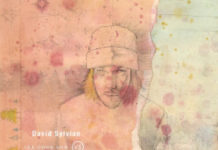By Mitch Rice
Here’s a question for our fellow music lovers: Have you ever been to a concert where the energy was electric? Did it not make you feel like you were part of something bigger than yourself; something unforgettable? That’s the magic of live music events—they’re all about losing yourself in the moment and creating memories that last a lifetime.
But we’re here to talk about something equally important: your safety at these concerts. While we all want to have an amazing time, ensuring that everyone stays safe and secure is key to keeping the good vibes going. From navigating through crowds to enjoying epic performances, there’s a delicate balance between having fun and being mindful of our surroundings.
Our goal today is to explore the safety measures that make any concert or music festival a safe entertainment space for artists and their audiences. Let’s begin without any further ado.
Safety Measures Necessary for Keeping Things Smooth
Let’s face it – nobody likes the sound of terms like “robust safety measures” thrown around, especially at concerts. It is, after all, at these places that music lovers can truly let themselves go.
However, while we don’t want to burden you with the safety responsibilities, you should at least know about them, shouldn’t you? After all, your entire seamless concert experience hinges on these measures. In their absence, you might find yourself in a deep mess.
Ready to take a quick walk-through of these safety measures with us? Let’s get going.
Having A Surveillance System in Place
A well-equipped surveillance system at concerts and other large-scale events isn’t just for show. It’s a critical tool for monitoring crowd movements, identifying potential risks, and responding swiftly to any incidents.
But is a surveillance system enough? Traditional security measures – such as metal detectors at entrances and security personnel deployed across the venue – simply won’t cut it nowadays. To deal with a smart audience, organizers must up their game by combining surveillance cameras with AI-driven video analytics technology.
The actionable, real-time data collected on these cameras can work as intelligent data, helping security personnel monitor situations accordingly. The face recognition tool this technology is equipped with also helps keep known offenders from entering the premises.
In case of any potential crime – theft, attack, or abduction – it becomes easier to catch the perpetrator and bring things back to order in no time.
Planning Ahead for Emergency Response
No one likes to think about emergencies during a concert, but being prepared is non-negotiable. For concert organizers, this preparation translates to:
- Meticulously planning emergency response procedures
- Training staff in first aid and evacuation protocols
- Coordinating closely with local authorities to ensure rapid and effective responses when needed.
Crowd Control & Management – Everything to Know
Managing the enthusiastic energy of thousands of concert-goers is both an art and a science. Your first defense against a wild concert crowd is a large staff presence. Having a trained team of event security personnel makes it ten times easier to manage and control the crowd.
But what can you do to prevent such a frenzy beforehand? By solving the audience’s navigation problems, which leads to such scenarios in most cases. Organizers can do this by providing ample signage across the venue. Directions to entrances and exits, washrooms, registration lines, and designated smoking areas are to be prioritized.
Make sure all the signage is simple, bold, and large, to be easily read from afar. Investing in digital signage is also a great alternative you can explore.
: All staff members should have first aid and CPR training in case an emergency happens during the concert and there are injuries in the audience.
Addressing The Potential Threat of Fire
With all the heavy electrical equipment used during concerts, combined with the dense crowd, concerts face the potential threat of fire breaking out. Luckily for us, having a team of firefighters on-site can keep it at bay.
We might not realize it, but these brave heroes put themselves in danger for our safety. They’re vulnerable not only to fire but also to the chemicals present in firefighting foam.
TorHoerman Law notes that the AFFF firefighting foam – which effectively extinguishes all Class B fires – contains PFAS chemicals. Exposure to these chemicals makes them vulnerable to a number of diseases, including several types of cancer.
After this revelation came to light, an AFFF lawsuit was filed by many of the firefighters, demanding its manufacturers take accountability for their actions.
As music lovers as well as conscious citizens, we must be mindful of these threats. It will prevent us from creating any more problems for them, be it at concerts or elsewhere.
The Dynamics of Concerts & Music Festivals
Concerts are undoubtedly like magical realms where music, culture, and community converge to create unforgettable experiences. Ever wondered what makes these events so electric? Here’s what we think:
The Massive Audience and their Camaraderie
Picture this: thousands of fans gathered under the open sky or within the pulsing heart of a venue, all bonded by their love for music. It’s not just about enjoying the tunes; it’s more about the shared thrill.
We’re talking about the high-fives with strangers during your favorite chorus, and the new friendships sparked over a mutual obsession with a band. Aren’t they simply the best?
Science seems to agree. A 2023 study revealed evidence showing the physiological and movement synchronicity of audiences attending a live music concert together. As the audience resonated with the music, their aesthetic experiences led to bodily synchrony. If that’s not proof of the magic of music, we don’t know what else can be.
Extraordinary Stage Setups & Design
Now, imagine stepping into a world where stages aren’t just stages—they’re masterpieces of sensory delight. Lights dance in sync with the music, turning the atmosphere into a living, breathing spectacle. Massive speaker arrays pump out every beat, making sure you feel the music in your bones.
The stage of Taylor Swift’s Eras Tour was one such marvel. The show, referred to as Swift’s most ambitious show to date, saw her perform against different setups that were symbolic of her most popular music videos. There was a doll-house backdrop from Lover, the combination of Evermore and Folklore sets into one, and the 1989 set displaying a Shelby Cobra.
Now that’s a concert we’d all like to be spectators to, won’t we?
Frequently Asked Questions (FAQs)
How can I stay safe amidst the large crowd of concerts?
The first safety tip for concerts is to prefer going with a group rather than alone. This ensures you have people watching your back, which comes in handy in large crowds. If that’s not possible, share your live location with trusted friends and family as soon as you get inside.
Are there medical services available at concerts?
To look after the well-being of attendees, all concert venues typically have medical services. Upon arrival, it’s a good idea to locate the nearest medical stations before the concert starts. If you’re struggling to find them on your own, get help from any security personnel.
Are there restrictions on what I can bring to a concert?
Most concerts already have a detailed list of prohibited items on their website. But to get a general idea, you should avoid bringing weapons, drugs, professional recording equipment, and outside food or drinks to a concert. Checking the venue’s specific policies online is also suggested.
To sum it all up, concerts are all about soaking in the good vibes, making unforgettable memories, and rocking out to your favorite tunes. While safety measures might not be the most exciting topic, they’re crucial for keeping the party going without a hitch.
Data and information are provided for informational purposes only, and are not intended for investment or other purposes.






